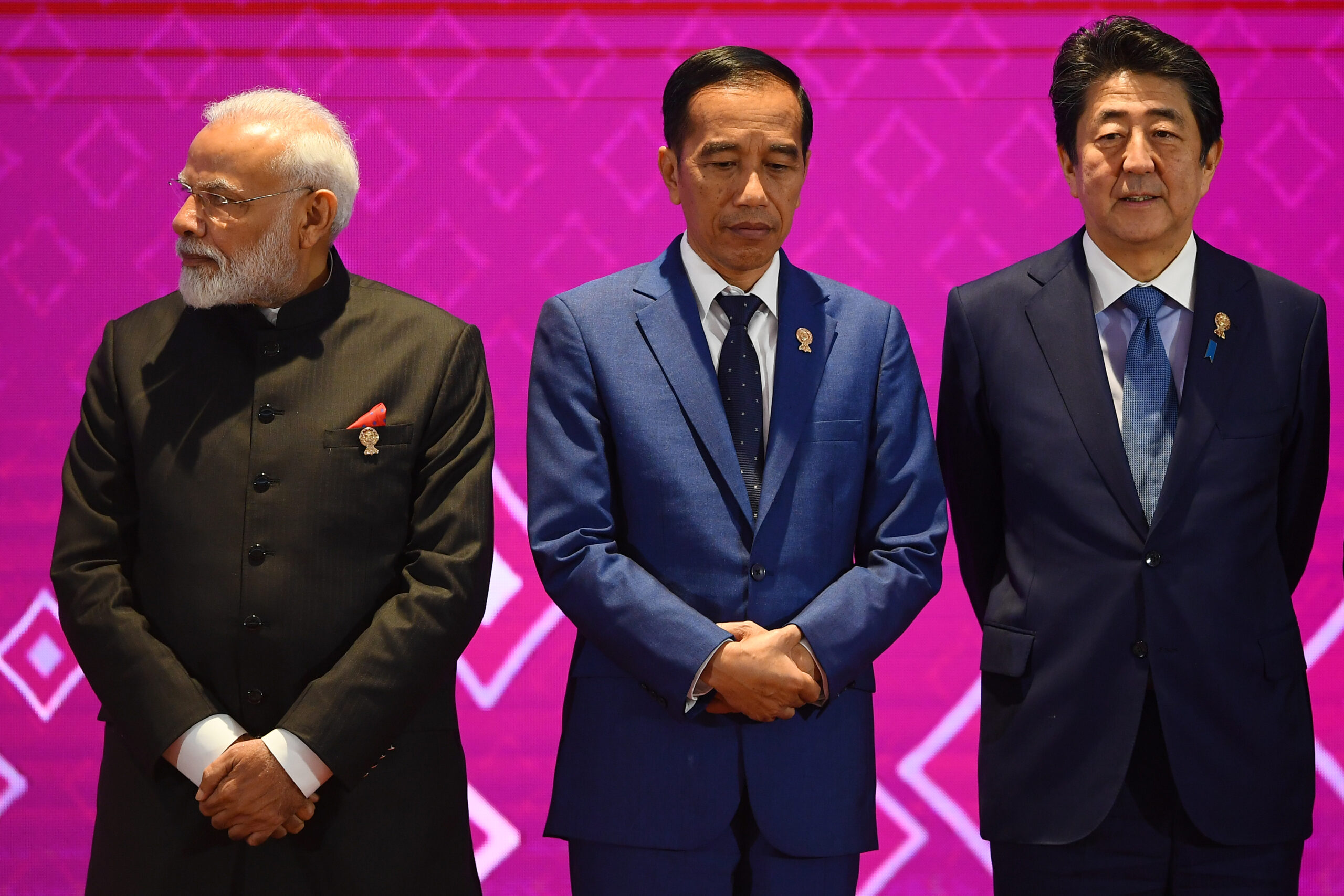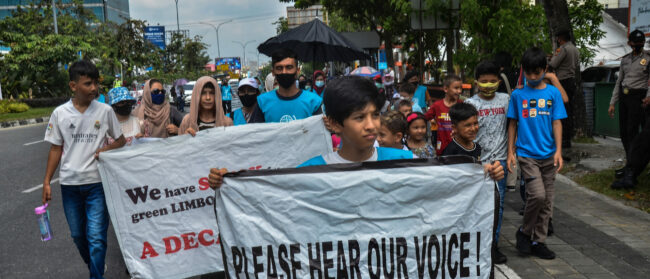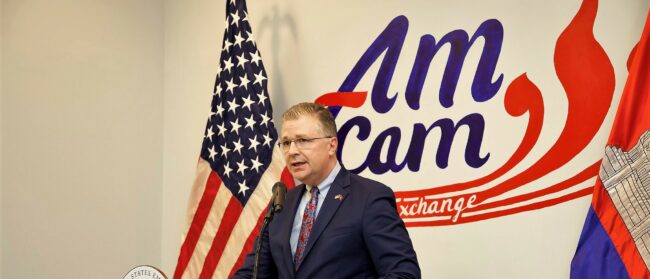In eulogies and memorial commentaries that followed the death of former Japanese Prime Minister, Shinzo Abe, who was assassinated by a homemade shotgun in the city of Nara in July, scholars and statesmen have stressed the importance of his Free and Open Indo-Pacific (FOIP) vision. Some have even credited him with inventing the Indo-Pacific region as a whole. Yet few have properly addressed Abe’s legacy in Southeast Asia.
Abe, like many prime ministers before him, had always shown a keen interest in the region. Japan understood the significance of Southeast Asia to Japan’s post-war economic growth, as well as the political ties that would be essential to the maintenance of Japanese security. Sea lanes of communication, particularly in the South China Sea, are critical as the majority of energy imports travel through the region. China’s historic rise reinforced Japan’s bilateral relations with many ASEAN countries, in addition to Abe’s not-so-secret ambition of moving Japan towards becoming a normal power, as in being capable of both defending itself and increasing its own military capacity.
Abe remained pragmatic and opportunistic about some of the more prescient events in the region. When then-royal Thai Army chief Prayut Chan-o-cha overthrew the democratically elected government of Yingluck Shinawatra, Japan’s response was simply that it was “regrettable” and urged the return of democracy. Abe’s steady diplomacy with Thailand was evident in participation in Cobra Gold exercises with the U.S. military, as well as ensuring that Prayut continued to support freedom of navigation and the resolution of disputes by peaceful means, as recognised in the 1982 UN Convention on the Law of the Sea. Japan’s pragmatic diplomacy contributed to greater unity among Southeast Asian states with regard to China’s conduct in the South China Sea.

Abe’s diplomacy was difficult and balanced with the Thai junta, pushing for a return to democracy, while also careful not to nudge a notoriously sensitive Thai foreign policy in the direction of Beijing’s. He understood the utility of tolerating Prayut, while promoting Japan’s business and strategic interests in the country.
Japan has long understood that Thailand has desired defense modernisation, evidenced by an increase in defense spending as a percentage of GDP or roughly $102 billion and a comical attempt to purchase a submarine from China. Under Abe, Thailand and Japan have advanced defense talks, with recent discussions about providing Thailand with an air defense system.
Abe’s policy in Cambodia was similar to his policy in Thailand. As the thin veneer of democracy in Cambodia gave way to a brutal crackdown the Cambodian National Rescue Party (CNRP), the Kingdom’s main opposition party, Abe remained pragmatic. In a 40 country joint statement at the United Human Rights Council condemning political repression in Cambodia, Abe remained silent, staking out a position between Cambodian Prime Minister Hun Sen’s domestic political agenda and Phnom Penh’s biggest supporter, Beijing.
Our Japanese friends have never abandoned us.”
former Cambodian National Election Committee (NEC) Chairman Sik Bun Hok
Japan found diplomatic success prior to Abe, but he was able to leverage Japan’s credibility into favorable relations with Hun Sen. This meant bucking the international trend of imposing sanctions on Cambodia, including revoking access to broader markets under the European Union’s Everything But Arms scheme. Abe even doubled down on electoral support to Cambodia, even though he knew elections in the country would be a scam, donating 10,000 ballot boxes ahead of the much-maligned July 2018 National Elections. While the boxes, worth $7.5 million were among many contributions to Cambodia, symbolised something important to Cambodia, friendship, evidenced by the words of former Cambodian National Election Committee (NEC) Chairman Sik Bun Hok who said, “Our Japanese friends have never abandoned us.” In stark contrast to growing autocracy in his country, Hun Sen once referred to Japan as a “model of democracy…and the only suitable country that we can learn from.”
Pragmatism is a hallmark of Abe’s legacy in Southeast Asia. In a region dominated by autocrats, Japan’s diplomacy under Abe sought to deliver on the political capital and soft power that Japan had accumulated over the past several decades, determined to become a reliable funding and infrastructure partner in the region, a counter to expensive Chinese Belt and Road Initiative projects. Proof rests in expanded partnerships, such as Hun Sen’s request of $800 million to develop a skytrain for Phnom Penh.
Abe understood that in order to manage China’s not-so-peaceful rise, it would have to maintain relationships with regimes that often ran contrary to Japan’s professed values—even in Myanmar, whose geography connects China to the critical Bay of Bengal. As an energy importer, Japan relies on secure passage through the waters near both Cambodia and Myanmar. Relationships with both are critical to Japan’s national security.
After his death, Abe’s – and Japan’s – legacy in Southeast Asia continues under Prime Minister Fumio Kishida. He was on hand in Bangkok in May to sign an agreement that transferred vital defense equipment and technology from Japan to Thailand in order to further Prayut’s defense modernisation initiative. Kishida was able to widen Bangkok’s perspective and managed to secure Prayut’s support for the maintenance of the status quo, not only in terms of territorial integrity and sovereignty for Ukraine, but in the Indo-Pacific backyard. In Thailand, Japan’s continued investments in agriculture, 5G technology, electric vehicles and infrastructure widen an already burgeoning economic relationship.
While Abe had stepped down prior to the February 2021 coup d’état that wrested Aung San Suu Kyi from power in Myanmar, Kishida has managed to quietly maintain relationships with military power brokers and policymakers. Conditions have undoubtedly changed in Myanmar, with Abe’s ambitions of a private sector-led initiative to compete with China in the country, but assist in its democratization.
In 2020, Japan provided Myanmar with more than $400 million in low-interest loans to finance road infrastructure and financing for small-to-medium sized companies. Yet, as the environment for private sector development has degraded, Kishida has begun cautioning the private sector about doing business in the country that weakens Japan’s position as a promoter of human rights. In a departure from Abe’s pragmatism, Kishida has moved further toward being a human rights norm enforcer in the Indo-Pacific, meeting repeatedly with other ASEAN member states to discuss the regional crisis and strongly condemn the Myanmar junta’s human rights abuses.
While Abe may not have been the originator of proactive and pragmatic diplomacy in Southeast Asia, he clearly maintained and greatly enhanced Japan’s relationships with key actors in the region, in particular with Thailand, Cambodia and Myanmar in particular. Kishida, while inheriting a political landscape even more fraught with challenges, has not yet demonstrated that he will alter Japan’s course anytime soon.


